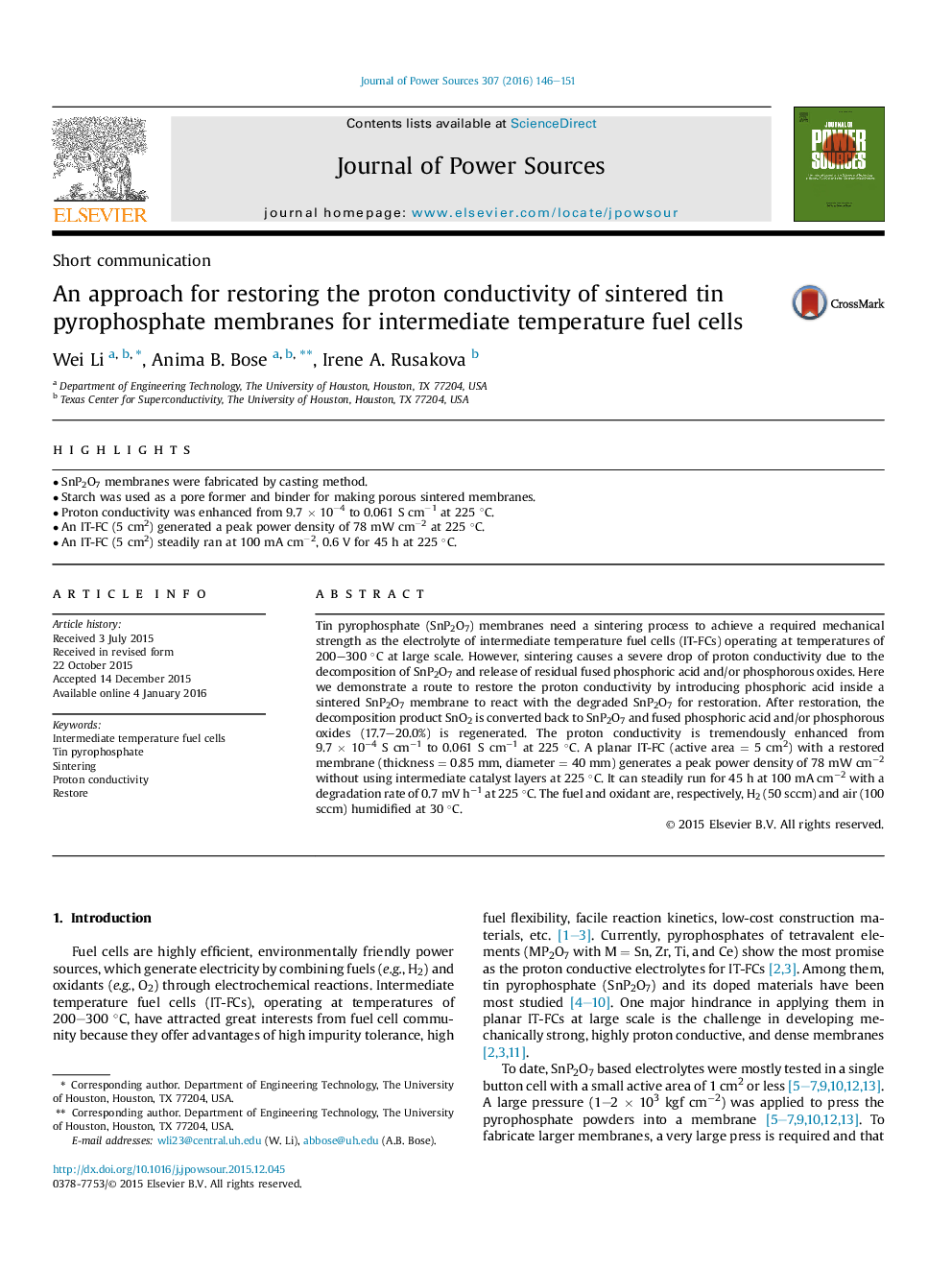| Article ID | Journal | Published Year | Pages | File Type |
|---|---|---|---|---|
| 7728881 | Journal of Power Sources | 2016 | 6 Pages |
Abstract
Tin pyrophosphate (SnP2O7) membranes need a sintering process to achieve a required mechanical strength as the electrolyte of intermediate temperature fuel cells (IT-FCs) operating at temperatures of 200-300 °C at large scale. However, sintering causes a severe drop of proton conductivity due to the decomposition of SnP2O7 and release of residual fused phosphoric acid and/or phosphorous oxides. Here we demonstrate a route to restore the proton conductivity by introducing phosphoric acid inside a sintered SnP2O7 membrane to react with the degraded SnP2O7 for restoration. After restoration, the decomposition product SnO2 is converted back to SnP2O7 and fused phosphoric acid and/or phosphorous oxides (17.7-20.0%) is regenerated. The proton conductivity is tremendously enhanced from 9.7 Ã 10â4 S cmâ1 to 0.061 S cmâ1 at 225 °C. A planar IT-FC (active area = 5 cm2) with a restored membrane (thickness = 0.85 mm, diameter = 40 mm) generates a peak power density of 78 mW cmâ2 without using intermediate catalyst layers at 225 °C. It can steadily run for 45 h at 100 mA cmâ2 with a degradation rate of 0.7 mV hâ1 at 225 °C. The fuel and oxidant are, respectively, H2 (50 sccm) and air (100 sccm) humidified at 30 °C.
Related Topics
Physical Sciences and Engineering
Chemistry
Electrochemistry
Authors
Wei Li, Anima B. Bose, Irene A. Rusakova,
